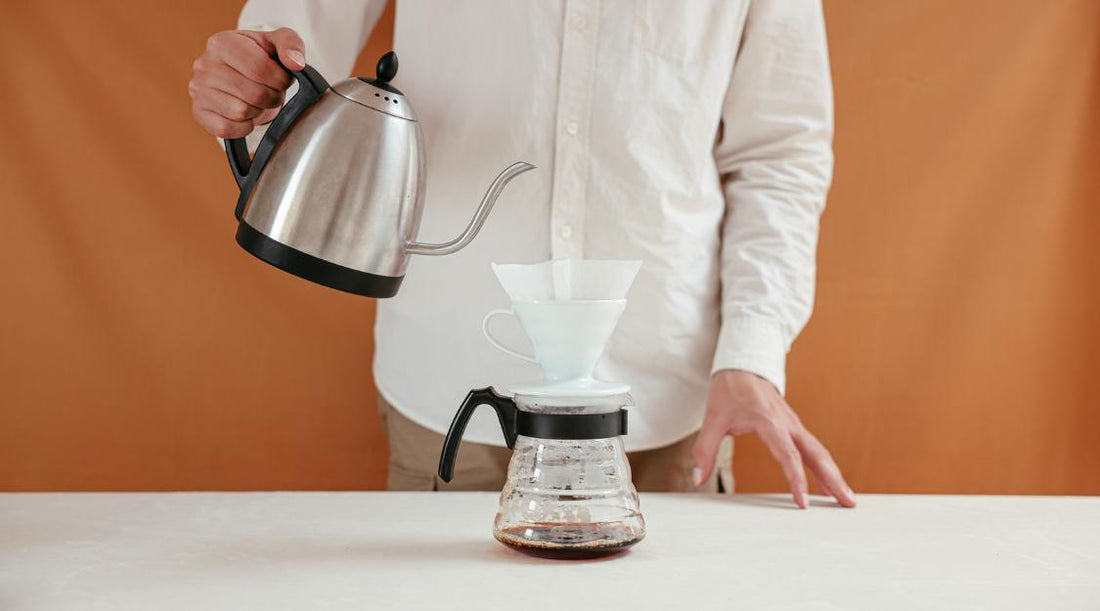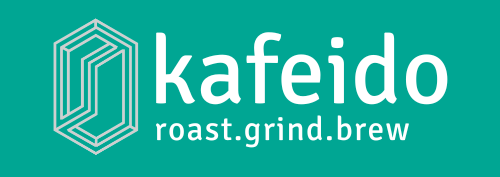
How does a coffee dripper work: A step-by-step guide
Share
A coffee dripper, also known as a pour-over coffee maker, is a simple and popular way to brew coffee at home or in a cafe. It’s a manual brewing method that allows you to have complete control over the brewing process and produce a fresh, clean-tasting cup of coffee.
To use a coffee dripper, you will need to have a few supplies on hand, including coffee beans, hot water, a coffee dripper, and a coffee mug or carafe to catch the brewed coffee.
Here's a step-by-step guide on how a coffee dripper works:
1. Grind the coffee beans
Begin by grinding the coffee beans to a medium-fine consistency, similar to the texture of table salt. The amount of coffee you use will depend on your personal preference and the size of your coffee dripper, but a good starting point is around 1 ounce (28 grams) of coffee beans per 6 ounces (180 mL) of water.
2. Set up the coffee dripper
Place the coffee dripper on top of your mug or carafe, and then place a coffee filter paper in the dripper. You can use either a cone-shaped or a flat-bottomed filter paper, depending on your preference.
3. Heat the water
Fill a kettle or a pot with water and heat it to around 200°F (93°C). The water should be hot but not boiling, as boiling water can extract bitter flavors from the coffee beans.
4. Wet the filter paper
Once the water gets to the right temperature, pour a small amount over the filter paper to wet it and remove any paper taste. This will also help to warm up the mug or carafe.
5. Add the coffee grounds
Place the coffee grounds in the filter paper, and then shake the dripper gently to level out the grounds.
6. Pour the water
Slowly pour the hot water over the coffee grounds, using a circular motion to ensure that all of the grounds are saturated. The water should pass through the coffee grounds and filter paper, dripping into the mug or carafe below.
7. Remove the coffee dripper
Once all of the water has been poured through the coffee dripper, carefully remove it from the mug or carafe and discard the filter paper and coffee grounds.
8. Enjoy your coffee
Give the brewed coffee a stir, and then let it cool for a few minutes before taking your first sip.
One of the main advantages of using a coffee dripper is that it allows you to have complete control over the brewing process. You can adjust the water temperature, the amount of coffee used, and the brewing time to suit your personal preferences and the characteristics of the coffee beans you are using.
This can be especially useful if you are using specialty or single-origin coffee beans, which may require different brewing conditions to bring out their unique flavors and aromas.
Types of coffee drippers
There are several different types of coffee drippers available, including cone-shaped and flat-bottomed drippers. Cone-shaped drippers, which are shaped like an inverted cone, are designed to allow the water to flow through the coffee grounds more slowly, resulting in a longer brewing time.
Flat-bottomed drippers, on the other hand, have a flat base and allow the water to flow through the coffee grounds more quickly. The type of dripper you choose will depend on your personal preference and the type of coffee you are brewing.
Things to keep in mind while using a coffee dripper
The water temperature and brewing time are two important factors that can affect the flavor of the brewed coffee. Water that is too hot can extract bitter flavors from the coffee beans, while water that’s too cool may not extract enough flavor.
Similarly, brewing for too long can result in over-extraction and a bitter taste, while brewing for too short a time can result in under-extraction and a weak, flavorless coffee.
By using a coffee dripper, you can experiment with different water temperatures and brewing times to find the perfect balance for your taste preferences.
In addition to the coffee dripper, you will also need to choose the right type of coffee filter paper. There are several different types available, including unbleached, bleached, and oxygen-cleansed papers.
Coffee enthusiasts do notice differences in the taste of brewed coffee when using different types of filter paper, so it may be worth trying out a few different types to see which one you prefer.
To summarize, using a coffee dripper is a simple and enjoyable way to brew coffee at home. It allows you to control all aspects of the brewing process, including the water temperature, the amount of coffee used, and the brewing time, which can all affect the flavor of the brewed coffee. With a little practice, you can easily brew a delicious, fresh cup of coffee using a coffee dripper.




